Introduction
Haridwar, often described as the “Gateway to the Gods,” is one of the most sacred cities in India. Located in the state of Uttarakhand, it is where the holy river Ganga descends from the Himalayan foothills and flows into the plains of North India. The name “Haridwar” is derived from two Sanskrit words—Hari (a name for Lord Vishnu) and Dwar (gateway)—symbolizing its role as the entry point to divinity.
For millions of devotees, Haridwar India is not just a destination but a spiritual journey. The ringing of temple bells, the chanting of priests, and the fragrance of incense create an aura of devotion that captivates visitors. Beyond its religious reputation, Haridwar has also become a vibrant cultural and wellness hub. Tourists from across the world, especially from the USA, come here to explore yoga, meditation, and Ayurveda while immersing themselves in India’s centuries-old traditions.
Whether you are a seeker of faith, a cultural explorer, or a wellness enthusiast, Haridwar offers an experience that is both profound and unforgettable. It is a city where spirituality merges seamlessly with daily life, and every corner resonates with divine energy.
Historical and Cultural Significance
Mythological Roots
The history of Haridwar dates back thousands of years and is deeply rooted in Hindu mythology. According to legend, during the celestial event of Samudra Manthan (the churning of the ocean), drops of the nectar of immortality (amrit) fell at four sites, including Haridwar. This is why the city became one of the four locations of the Kumbh Mela, the world’s largest religious gathering.
Haridwar is also one of the Sapta Puri, the seven holiest cities in Hinduism. Ancient scriptures such as the Puranas describe it as a place where sages meditated on the banks of the Ganga, making it an important site for rituals and spiritual learning.
A Center of Pilgrimage
For Hindu devotees, Haridwar, India, serves as the traditional starting point of the Char Dham Yatra, which covers the sacred shrines of Yamunotri, Gangotri, Kedarnath, and Badrinath. Pilgrims often begin their journey by taking a holy dip in the Ganga at Har Ki Pauri ghat. The city is also central to the annual Kanwar Yatra, during which millions of devotees collect water from the Ganges to offer it at Shiva temples across northern India.
The Kumbh Mela
The Kumbh Mela, held in Haridwar every 12 years, is one of the city’s most extraordinary events. Millions of pilgrims, saints, and travelers gather to take part in sacred rituals and ceremonial baths in the Ganga. The atmosphere is filled with chants, processions, and devotional energy. In 2017, UNESCO recognized the Kumbh Mela as part of the world’s intangible cultural heritage, emphasizing its global significance.
Living Traditions
Spirituality in Haridwar is not limited to grand festivals. It is part of everyday life. At dawn, the ghats are filled with devotees offering prayers, while in the evenings, the river glows during the Ganga Aarti. Major festivals such as Diwali, Makar Sankranti, and Ganga Dussehra bring the city to life with lights, music, and rituals. The presence of numerous ashrams and wellness centers makes Haridwar a hub for yoga, meditation, and Ayurveda, attracting wellness seekers from around the world.
Haridwar, India, is, therefore, much more than a city of temples and rituals. It is a cultural mosaic where history, tradition, spirituality, and wellness coexist harmoniously.
Best Time to Visit Haridwar
Timing your trip is crucial for making the most of Haridwar. Each season offers a different experience, depending on whether you want to explore spirituality, attend festivals, or enjoy sightseeing.
-
Spring (February to April)
-
Spring is considered the best season to visit Haridwar. With temperatures between 15°C and 25°C, the weather is pleasant and ideal for outdoor activities. Festivals such as Holi and Ram Navami bring vibrant celebrations to the city, making this period especially attractive to both domestic and international travelers.
-
Summer (May to June)
-
Summers can be hot, with temperatures rising above 35°C. Despite the heat, this is when the Char Dham Yatra begins, and Haridwar becomes the gateway for thousands of pilgrims. If traveling in summer, book accommodations early as the city gets very crowded.
-
Monsoon (July to September)
-
Haridwar experiences heavy rainfall during the monsoon. While the lush greenery adds charm, slippery ghats and waterlogging can make traveling difficult. However, this season sees fewer tourists, making it appealing for those seeking peace and solitude. Exercise caution when visiting riverbanks during this time.
-
Autumn (October to November)
-
Autumn offers crisp weather and clear skies, perfect for sightseeing. Festivals such as Diwali and Kartik Purnima light up the ghats, creating a magical atmosphere that draws pilgrims and tourists alike.
-
Winter (December to January)
-
Winters can be chilly, with temperatures dropping to around 5°C. While it may not suit every traveler, the serene environment and fewer crowds make it ideal for spiritual seekers looking for quiet reflection.
👉 Best Overall Months:
February to April and October to November are the most comfortable and culturally vibrant times to visit Haridwar.
How to Reach
Haridwar is well connected by air, train, and road, making it accessible from across India and abroad.
-
By Air
-
The nearest airport is Jolly Grant Airport in Dehradun, about 35 km away. Regular flights connect it to Delhi, Mumbai, and other major cities. For international visitors, especially those from the USA, Indira Gandhi International Airport in Delhi serves as the main entry point, followed by a domestic flight or road journey to Haridwar.
-
By Train
-
Haridwar Junction is a major railway station linked to Delhi, Varanasi, Kolkata, and Mumbai. Trains such as the Shatabdi Express and Jan Shatabdi Express make the journey quick and comfortable. Traveling by train also provides scenic views of the northern plains and the Himalayan foothills.
-
By Road
-
Haridwar lies about 220 km from Delhi and is easily accessible via national highways. A road trip from Delhi takes around 5–6 hours. State-run buses, private coaches, and taxis operate frequently between Delhi and Haridwar.
-
Local Transport
-
Within the city, you can use auto-rickshaws, e-rickshaws, cycle rickshaws, and shared tempos. Many temples and ghats are close to each other, so walking is often the most convenient option.
👉 For overseas travelers, the most convenient route is to arrive in Delhi, then take a connecting flight or train to Dehradun, followed by a short road trip to Haridwar.
Things to Do in Haridwar
Haridwar offers a mix of sacred, cultural, and wellness experiences. Here are the top things to do:
Attend the Ganga Aarti at Har Ki Pauri
The evening Ganga Aarti is Haridwar’s most iconic ritual. Priests chant hymns while lamps are lit and floated on the Ganga. Watching thousands of glowing diyas drift on the river is an unforgettable experience.
Take a Holy Dip in the Ganga
Bathing in the sacred waters of the Ganga is believed to cleanse sins and purify the soul. Pilgrims and tourists alike consider it a vital part of their visit to Haridwar.
Join Yoga and Meditation Retreats
Haridwar is home to famous centers such as Shanti Kunj and Patanjali Yogpeeth, where visitors can practice yoga, attend meditation sessions, and experience Ayurvedic therapies. These retreats are especially popular with travelers from the USA and Europe.
Explore the Local Bazaars
Markets like Bara Bazaar and Moti Bazaar are full of life. Visitors can shop for Rudraksha beads, Ayurvedic medicines, handicrafts, and religious souvenirs to take home.
Try Local Cuisine
Haridwar’s food culture is entirely vegetarian but bursting with flavor. Popular dishes include Aloo Puri, Chhole Bhature, and sweets like jalebis. Don’t miss the creamy lassi served in traditional clay cups.
Celebrate Festivals
Visiting during festivals such as the Kumbh Mela, Kanwar Yatra, or Diwali adds another dimension to your trip. The city transforms into a vibrant sea of lights, chants, and devotion, offering an experience unlike anywhere else.
👉 From sacred rituals and wellness retreats to shopping and food, Haridwar has something for every traveler.
Places to See in Haridwar
Haridwar is blessed with sacred temples, historic ghats, and cultural landmarks that reflect its deep spiritual roots. Each attraction tells a story and adds to the city’s charm.
Har Ki Pauri Ghat
Har Ki Pauri is the spiritual heart of Haridwar. It is believed to bear the footprint of Lord Vishnu, making it the most revered ghat in the city. The evening Ganga Aarti held here is a breathtaking sight, with chants, bells, and thousands of lamps illuminating the river.
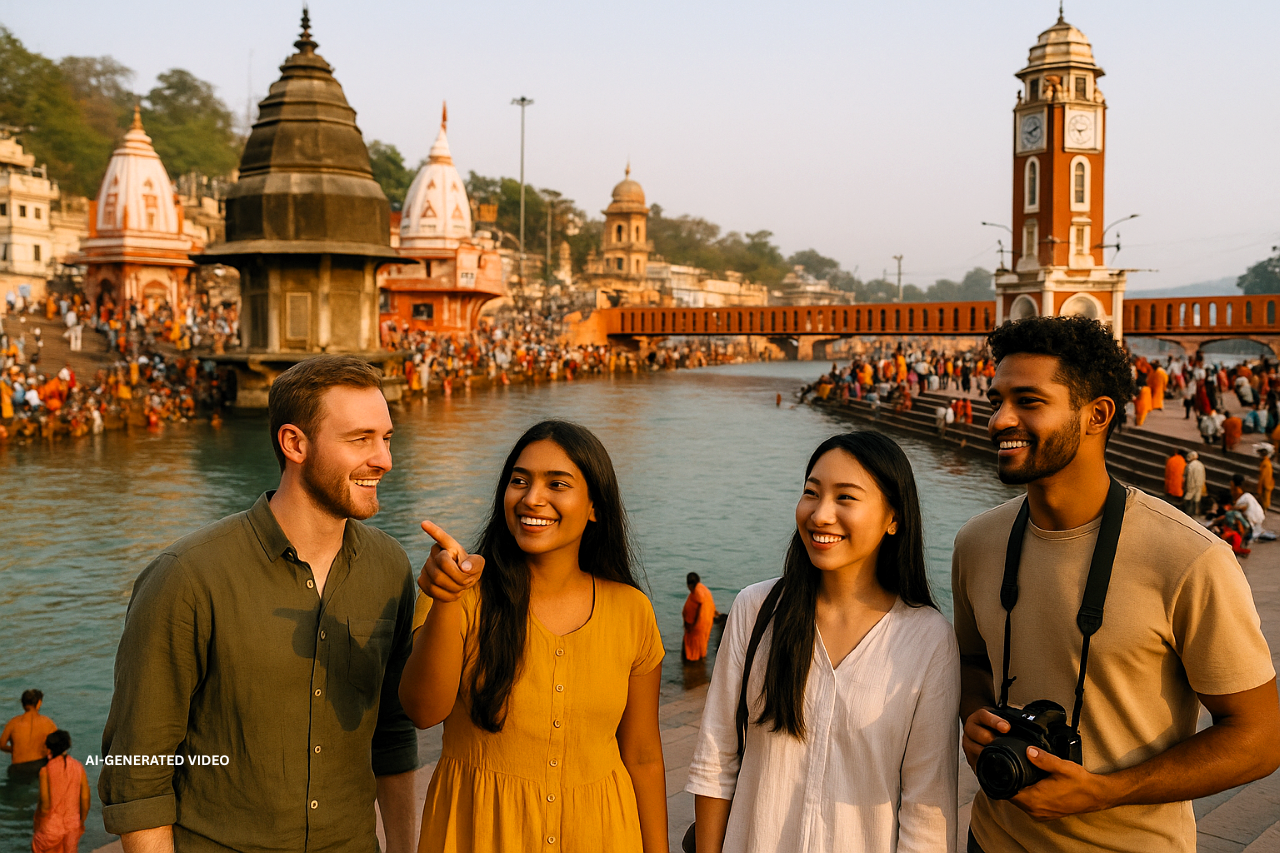
Mansa Devi Temple
Situated on Bilwa Parvat, this temple is dedicated to Goddess Mansa Devi, believed to fulfill devotees’ wishes. Visitors can trek up to the temple or take a ropeway ride, which also offers sweeping views of Haridwar and the Ganga.
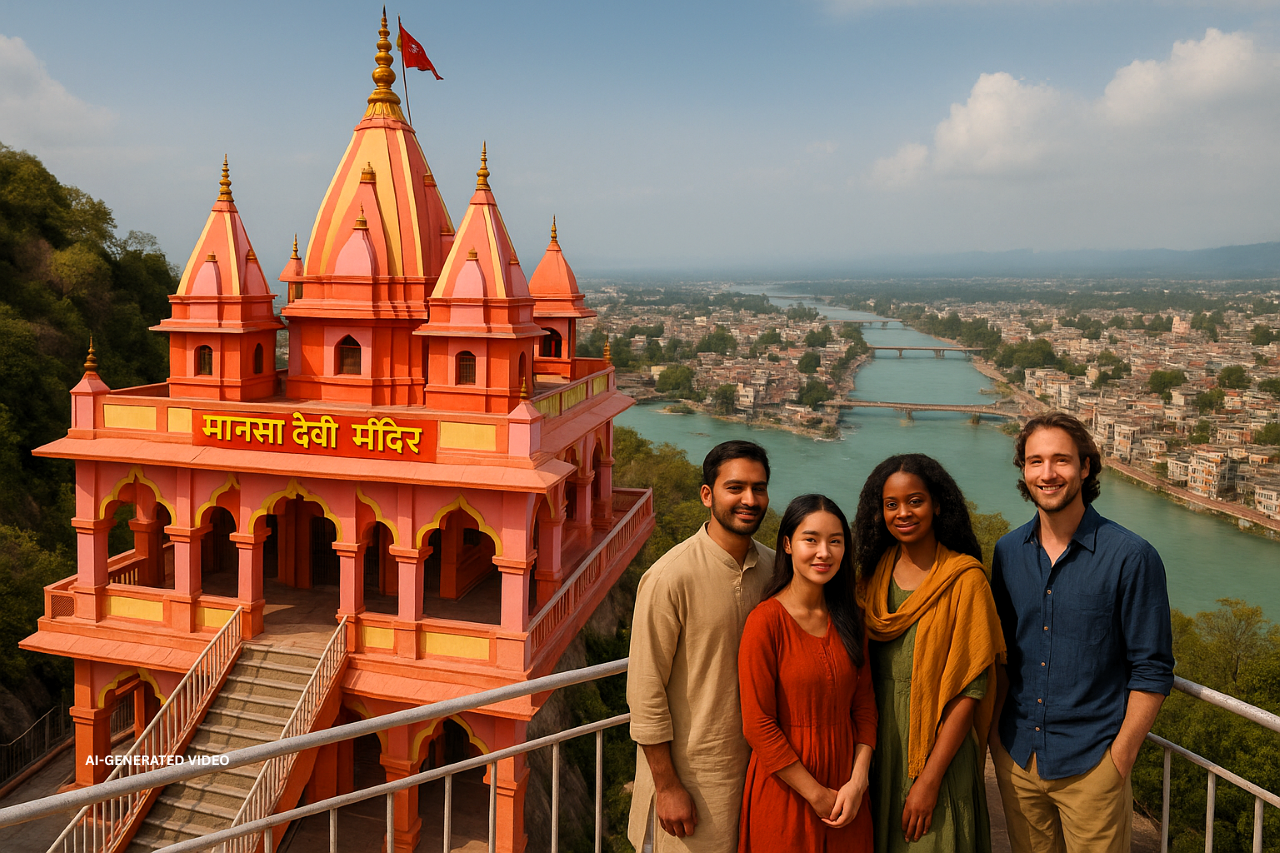
Chandi Devi Temple
Perched atop Neel Parvat, this temple is dedicated to Goddess Chandi. Like Mansa Devi, it can be reached either on foot or via cable car. Visiting both temples is considered especially auspicious.
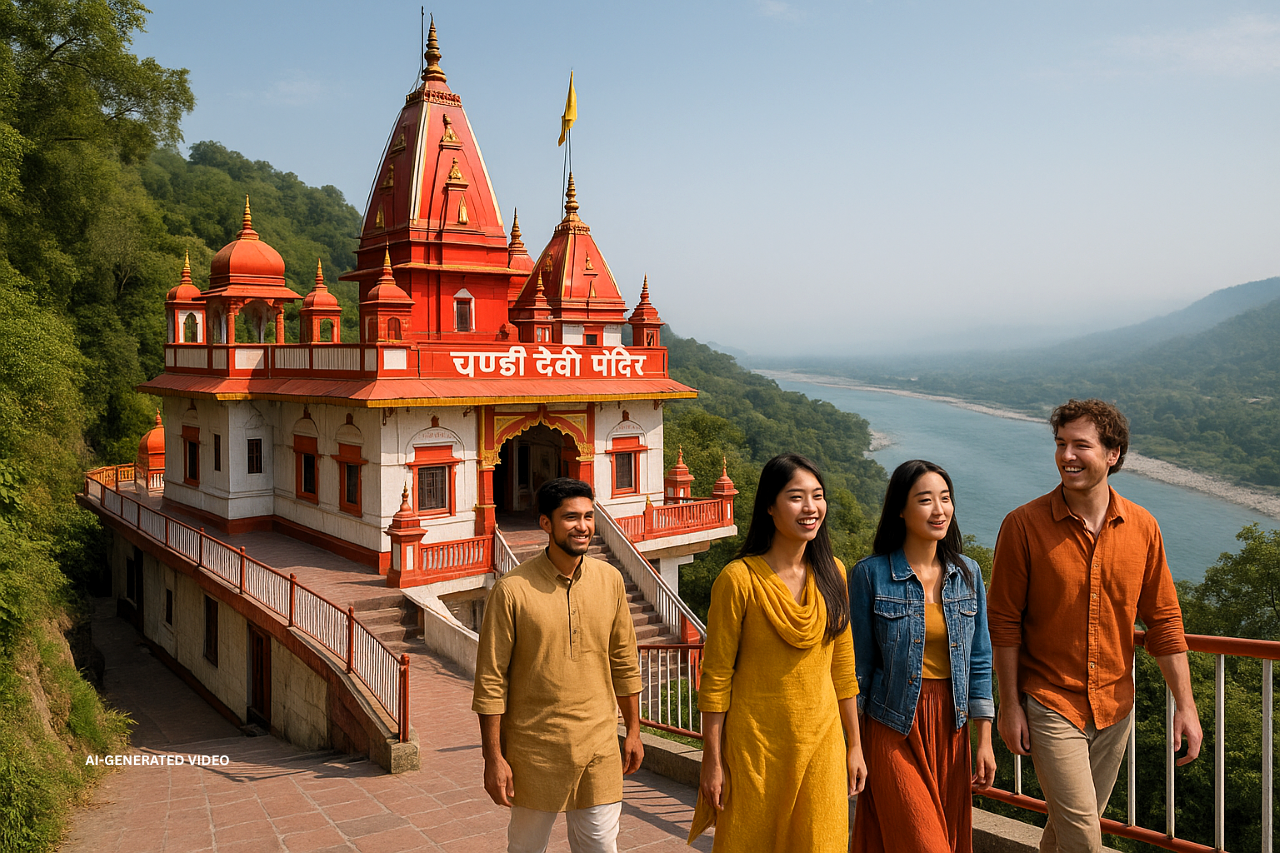
Maya Devi Temple
One of the oldest temples in Haridwar, the Maya Devi Temple is a Shakti Peetha, making it a vital stop for pilgrims. Its historical significance dates back to the 11th century.
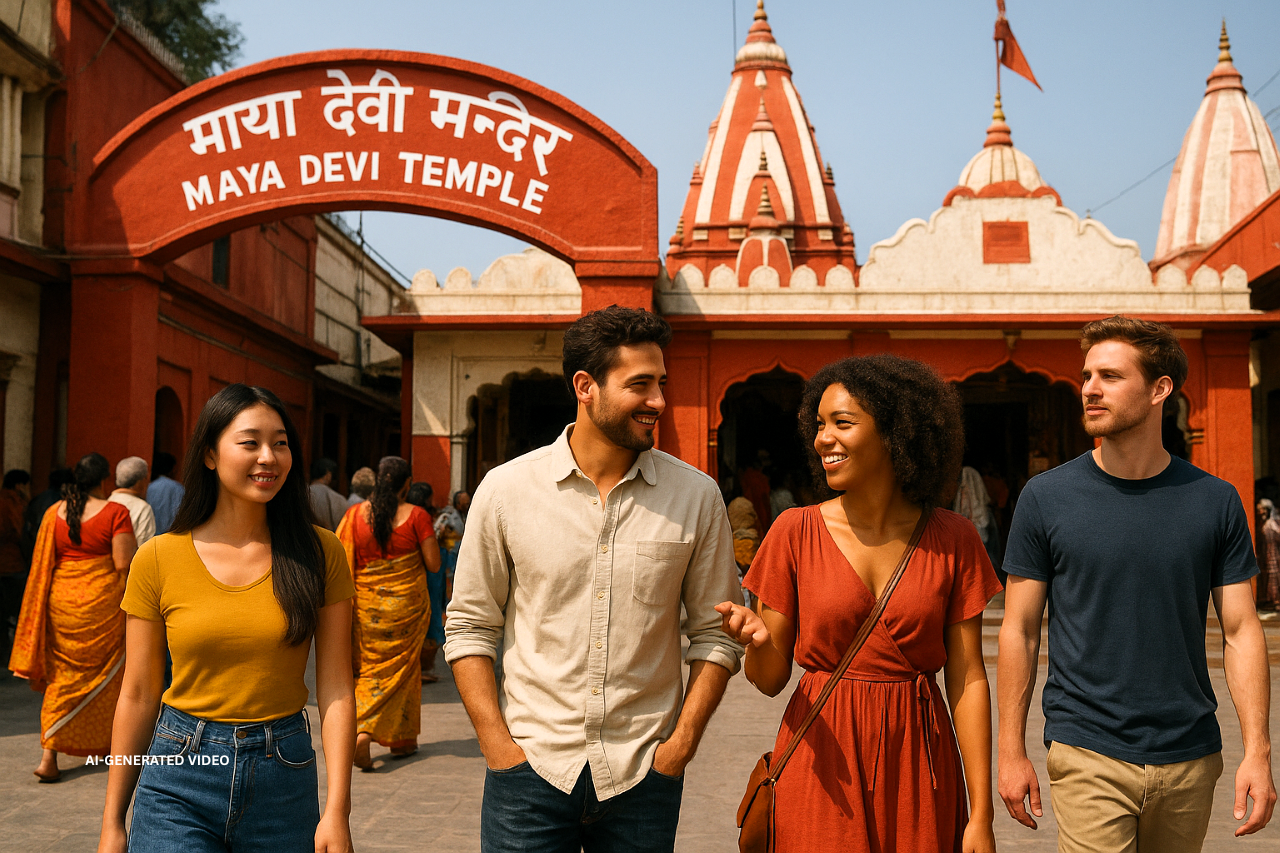
Daksha Mahadev Temple
Located in Kankhal, this temple is linked to the legend of Goddess Sati and Lord Shiva. It is particularly popular during Maha Shivratri.

Bharat Mata Mandir
This unique multi-story temple is dedicated to Mother India. Each floor is designed to honor freedom fighters, saints, and cultural icons, offering both spiritual and patriotic inspiration.
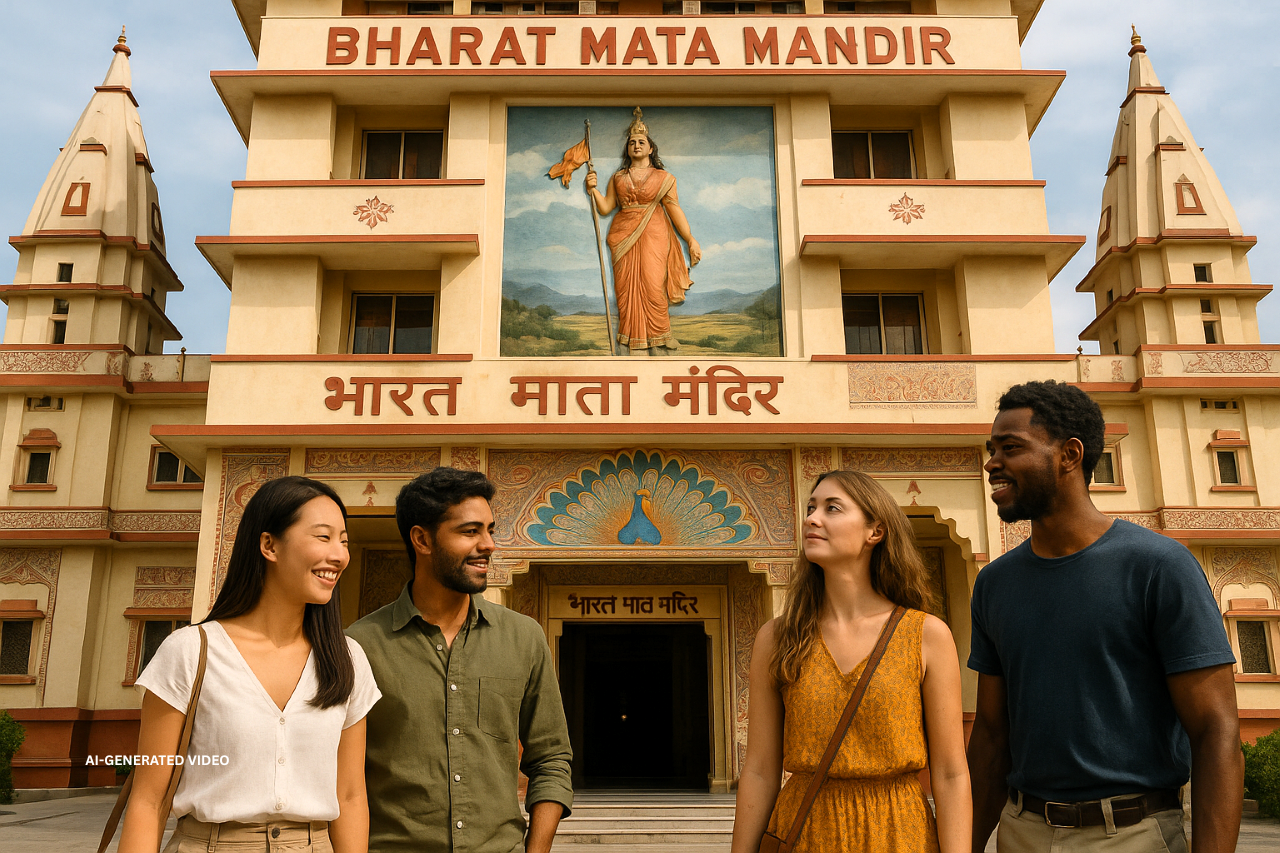
Shanti Kunj Ashram
Known for promoting moral and spiritual values, Shanti Kunj is a center of learning and meditation. Visitors can attend programs on yoga, Ayurveda, and holistic living.
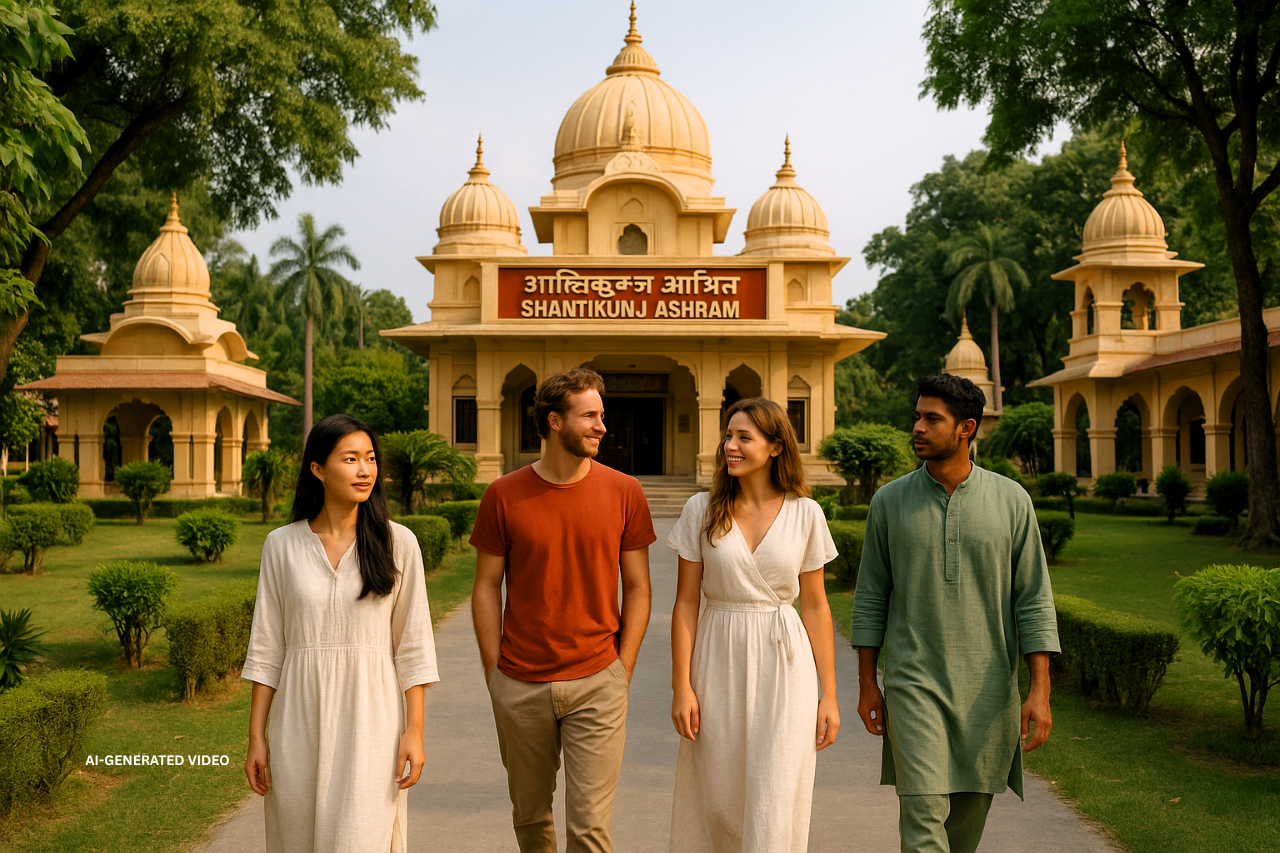
Patanjali Yogpeeth
Founded by Baba Ramdev, this institute is one of the largest yoga centers in the world. It attracts wellness enthusiasts from India and abroad, including many travelers from the USA.
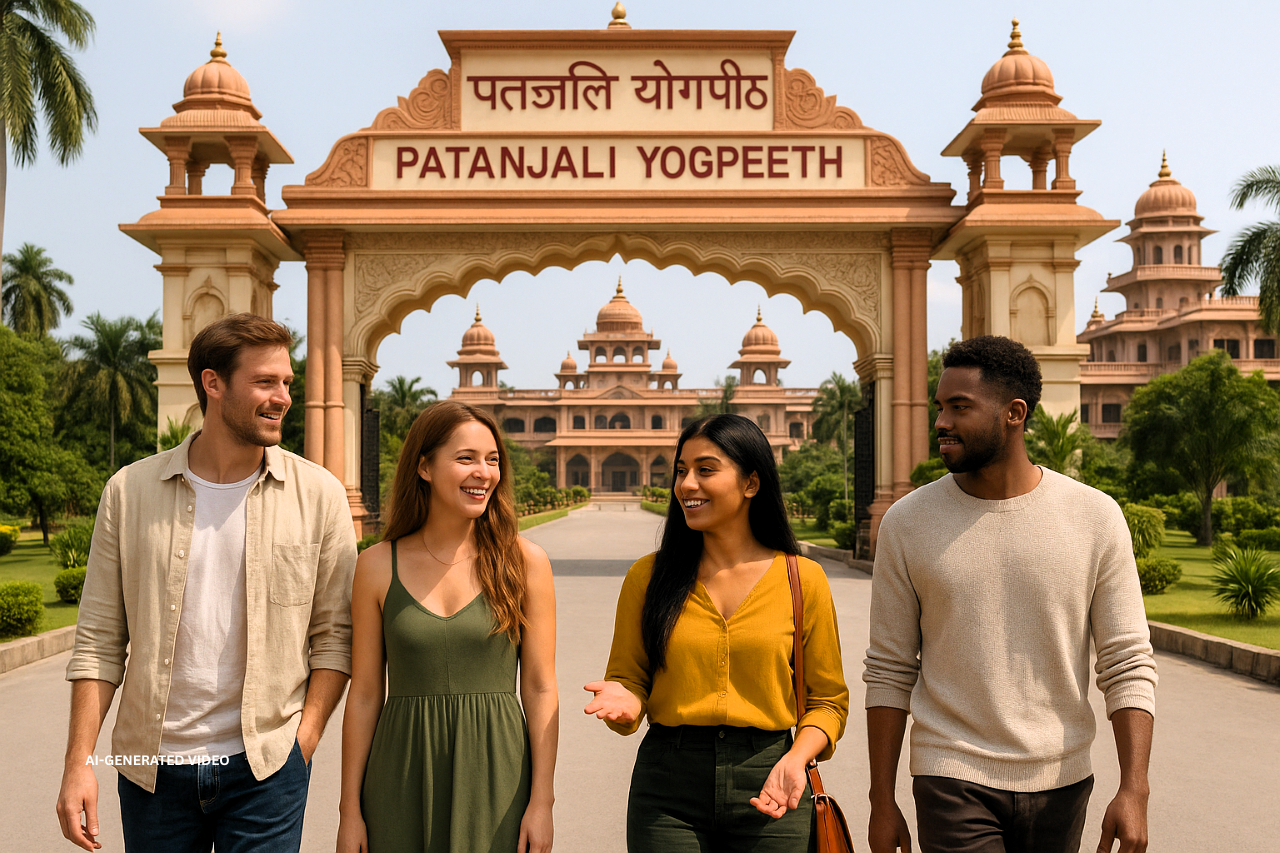
Bhimgoda Tank
According to mythology, Bhima from the Mahabharata struck the ground here, creating this sacred tank. Today, it remains an important historical site.
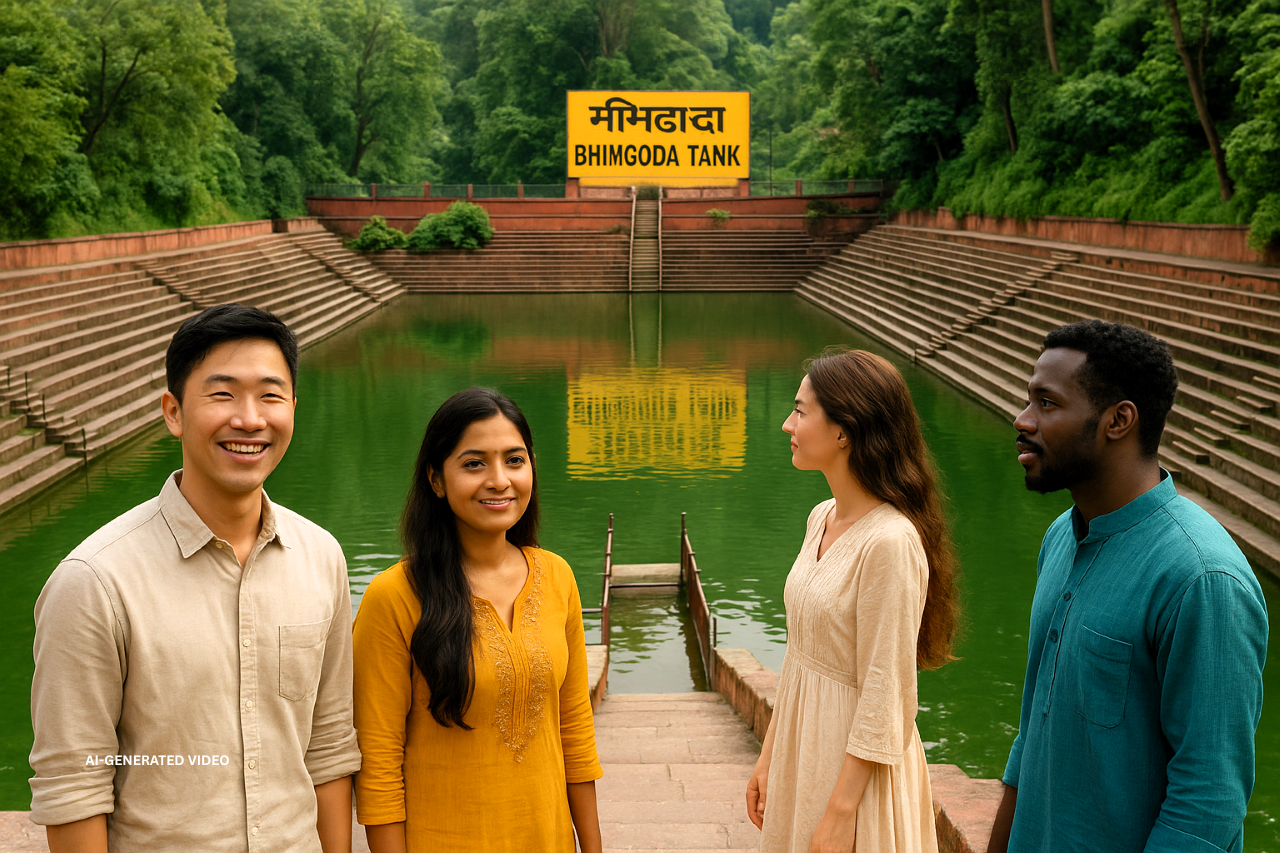
Rajaji National Park
Just outside Haridwar lies Rajaji National Park, home to elephants, tigers, leopards, and over 400 bird species. A jeep safari here offers an exciting break from the city’s spiritual atmosphere.
Nearby Excursions and Day Trips
Haridwar’s location makes it a convenient base for exploring nearby destinations.
-
Rishikesh (20 km)
-
Known as the “Yoga Capital of the World,” Rishikesh is famous for yoga retreats, adventure sports like river rafting, and landmarks such as Lakshman Jhula and Ram Jhula.
-
Dehradun (50 km)
-
The capital of Uttarakhand, Dehradun, is known for attractions like Robber’s Cave, Tapkeshwar Temple, and the Forest Research Institute. Its markets and bakeries add to its appeal.
-
Mussoorie (80 km)
-
A hill station often called the “Queen of Hills,” Mussoorie offers stunning views, a cool climate, and a relaxed holiday vibe. Popular attractions include Kempty Falls and Mall Road.
-
Chandi Ghat and Lesser-Known Riverbanks
-
For travelers who prefer tranquility, ghats such as Chandi Ghat provide a peaceful alternative to the crowded Har Ki Pauri.
-
Neelkanth Mahadev Temple (near Rishikesh)
-
Surrounded by forests, this temple dedicated to Lord Shiva is an important pilgrimage site and a rewarding excursion for those combining Haridwar with Rishikesh.
👉 These nearby destinations make Haridwar not only a spiritual hub but also a starting point for memorable day trips.
Local Culture and Traditions
-
Daily Life on the Ghats
-
Life in Haridwar revolves around the Ganga. Mornings begin with rituals, chanting, and holy dips, while evenings are marked by devotional songs and the grand Ganga Aarti.
-
Religious Practices
-
Rituals such as pujas (prayer ceremonies), yajnas (fire offerings), and rites for ancestors are central to life here. Families often travel to Haridwar to perform ancestral ceremonies, reinforcing its role as a sacred city.
-
Traditional Attire and Customs
-
Modest clothing is the norm, with men often wearing dhotis and kurtas and women donning sarees or salwar suits. Removing footwear before entering temples is a must, and respecting these customs ensures a meaningful experience.
-
Ayurveda and Wellness
-
Haridwar is renowned for its Ayurvedic therapies and wellness programs. Many visitors come not only for spirituality but also for rejuvenation through yoga and herbal treatments.
-
Festivals and Celebrations
-
Festivals such as Diwali, Holi, Makar Sankranti, and Ganga Dussehra are celebrated with devotion and joy. Streets glow with lights, chants fill the air, and the city transforms into a vibrant cultural stage.
👉 Immersing in Haridwar’s culture is as rewarding as visiting its temples. The traditions of Haridwar reflect a way of life where spirituality and culture are deeply intertwined.
Cuisine of Haridwar
Food in Haridwar is not just about flavor—it reflects spirituality, tradition, and a way of life. As a sacred city, Haridwar follows a strict vegetarian food culture, yet the variety and richness of taste are extraordinary.
-
Street Food Favorites
-
Haridwar’s bustling streets are filled with vendors offering delicious snacks. Popular choices include Aloo Puri, crisp kachoris stuffed with lentils, spicy chaat, and golden samosas. Sweet lovers should not miss freshly made jalebis, dripping with syrup and served hot.
-
Temple Prasad
-
In Haridwar, temple visits are often accompanied by receiving prasad. Temples distribute blessed sweets like ladoos and pedas, adding a divine touch to the experience.
-
Refreshing Drinks
-
The city is famous for its thick and creamy lassi, often served in clay cups for an authentic flavor. Fresh sugarcane juice and herbal concoctions are also widely available, keeping visitors refreshed after exploring the ghats.
-
Sattvic and Ayurvedic Meals
-
Many ashrams and wellness centers serve sattvic food, meals free from onion, garlic, and heavy spices. Simple and nourishing, these meals are part of Ayurveda-inspired diets and attract health-conscious travelers from across the world.
👉 Exploring the cuisine of Haridwar is a journey through both flavor and faith, making food an essential part of the city’s cultural experience.
Travel Tips for Visitors
Haridwar is a welcoming city, but a few practical tips will help make your trip smooth and memorable:
Dress Modestly
Haridwar is a deeply spiritual city. Wear modest clothing, especially at temples and ghats. Removing footwear before entering sacred spaces is a must.
Be Careful at the Ghats
The Ganga’s currents can be strong. Use the safety chains provided and avoid venturing into deep waters while bathing.
Plan for Festivals
During events such as the Kumbh Mela or Kanwar Yatra, Haridwar sees huge crowds. Book your stay early and allow extra time for moving around the city.
Food and Water Safety
Drink bottled or filtered water to stay safe. Street food is a must-try, but choose vendors who maintain cleanliness and attract local crowds.
Getting Around
Auto-rickshaws, e-rickshaws, and cycle rickshaws are the most common local transport options. For nearby destinations like Rishikesh or Dehradun, consider hiring a taxi or using state-run buses.
Accommodation Options
Haridwar offers a wide range of accommodations, from budget-friendly dharamshalas (pilgrim lodges) to mid-range hotels and luxury resorts. Staying at an ashram is a great choice for travelers seeking a spiritual experience.
👉 Following these simple tips ensures that your visit to Haridwar is safe, respectful, and enjoyable.
Sustainable & Responsible Tourism
As a major pilgrimage city, Haridwar faces challenges such as crowd management, pollution, and waste disposal. Practicing responsible tourism helps preserve its sacred atmosphere and natural beauty.
-
Eco-Friendly Offerings
-
When making offerings to the Ganga, avoid plastic bags, synthetic items, and chemical-based products. Use natural flowers and biodegradable lamps instead.
-
Reduce Plastic Usage
-
Carry a reusable water bottle and cloth bags for shopping. Supporting shops that follow eco-friendly practices helps reduce plastic waste.
-
Support Local Artisans
-
Buy souvenirs, handicrafts, and Ayurvedic products from local vendors rather than mass-produced items. This supports small businesses and preserves traditional crafts.
-
Respect Wildlife and Nature
-
When visiting Rajaji National Park or nearby forests, avoid littering and follow park rules. Respecting natural habitats ensures sustainable travel.
-
Choose Eco-Friendly Stays
-
Many ashrams and eco-resorts in Haridwar follow sustainable practices such as organic farming, solar energy, and recycling. Choosing such accommodations helps protect the environment.
👉 Practicing responsible tourism ensures that Haridwar remains as beautiful and sacred for future generations as it is today.
Conclusion
Haridwar is far more than a city—it is a sacred journey that embodies devotion, tradition, and cultural richness. Known as the Gateway to the Gods, it attracts millions of pilgrims, spiritual seekers, and travelers every year. From the mesmerizing Ganga Aarti at Har Ki Pauri to the serenity of temples like Mansa Devi and Chandi Devi, Haridwar’s spiritual aura leaves a lasting impression on all who visit.
Yet Haridwar is not only about faith. The city’s bustling bazaars, mouthwatering vegetarian cuisine, yoga centers, and Ayurvedic retreats give visitors a chance to experience India’s culture and wellness traditions firsthand. For those seeking nature, nearby attractions such as Rajaji National Park, Rishikesh, and Mussoorie offer a refreshing balance of spirituality and adventure.
For international travelers, especially those from the USA, Haridwar serves as a gateway to India’s heart and soul. By visiting at the right time, respecting local traditions, and traveling responsibly, every trip here becomes an unforgettable journey of discovery and peace.
👉 In short, Haridwar is where spirituality, culture, and nature unite, offering a timeless experience that stays with you long after your visit.
FAQs
Is Haridwar safe for international tourists?
Yes, Haridwar is generally safe for both domestic and international visitors. However, as in any crowded city, remain cautious, especially during festivals, and keep valuables secure.
When is the best time to visit Haridwar?
The best seasons are spring (February–April) and autumn (October–November), when the weather is pleasant and festivals add to the city’s charm.
How many days should I plan for Haridwar?
Two to three days are sufficient to explore the city’s highlights, attend the Ganga Aarti, and enjoy a short trip to nearby Rishikesh.
Why is Har Ki Pauri so important?
Har Ki Pauri is Haridwar’s most sacred ghat, believed to bear Lord Vishnu’s footprint. It is also the site of the famous evening Ganga Aarti, a highlight of any visit.
What type of clothing is suitable for Haridwar?
Light cottons are ideal for summer, while warm clothes are necessary in winter. Modest clothing is recommended, especially for visiting temples and ghats.
Can foreigners attend the Ganga Aarti?
Yes, the Ganga Aarti is open to everyone. Visitors of all faiths are welcome, provided they participate respectfully and maintain decorum.
How far is Haridwar from Rishikesh and Dehradun?
Haridwar is about 20 km from Rishikesh and 50 km from Dehradun, both easily reachable by road.
What are the best things to buy in Haridwar?
Popular souvenirs include Rudraksha beads, brass idols, Ayurvedic medicines, herbal cosmetics, and handcrafted items from local markets.
Is Haridwar family-friendly?
Yes, Haridwar is suitable for families. It offers cultural, spiritual, and wellness experiences that appeal to visitors of all ages.
What types of accommodations are available in Haridwar?
Options range from budget-friendly dharamshalas and guesthouses to mid-range hotels, luxury resorts, and ashrams that provide simple rooms with meals.
